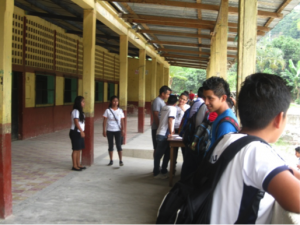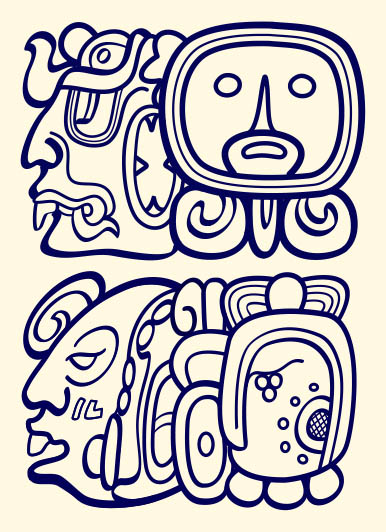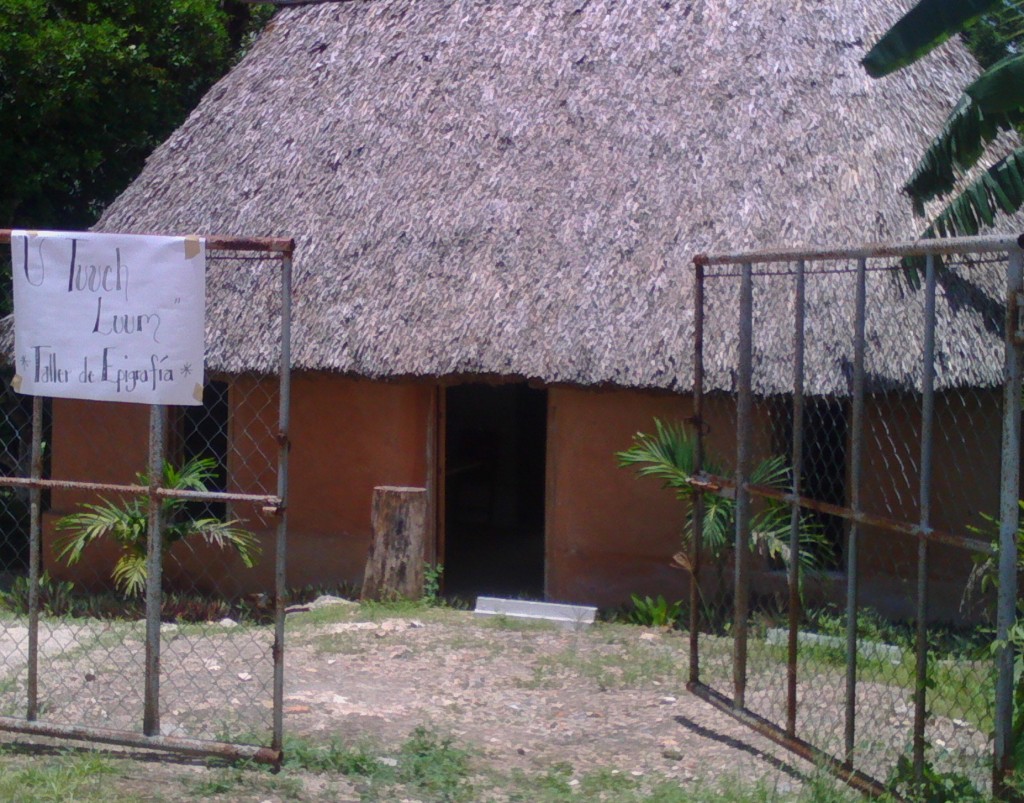Dear readers,
As an addendum to our previous blog about the advanced workshop taught by Nikolai Grube, the Sak Chuwen Group wishes to thank a number of individuals who helped make the workshop a success, names that inadvertently were not mentioned in the last blog, persons without whose help the workshop would not have been possible:
- Igor Xoyon and Karina Koy for their work giving beginner and intermediate-level workshops that allowed many of the students to participate in the advanced workshop.
- Alejandro Garay for his superb efforts in coordination and logistics.
- Antonio Cuxil for offering to serve as tour guide during the visit to the ancient Maya city of Quirigua.
- To the team of Dirección General de Desarrollo Cultura y Fortalecimiento de las Culturas, whose arduous efforts handled the muliple details of making the workshop happen.
It is hoped that we maintain this collaboration between institutions and individuals to make possible the continuation and persistence of teaching Maya epigraphy in Guatemala.
Iyaxel Cojti Ren, Sak Chuwen Group
Today’s blog was submitted by our long-time colleague and co-organizer of the up-coming Third International Congress of Maya Epigraphers in 2016 (more about that in coming announcements), Ajpub’ Garcia Ixmatá, Tz’utujiil-speaker and resident of Antigua, Guatemala.
Ancient Writing in San Pedro Cutzán, Suchitepéquez
by Ajpub’ Pablo García Ixmatá
Again, appreciation to the foundation Mayas for Ancient Mayan for the support offered for the teaching of Maya epigraphy and the Maya calendars.
This workshop occurred on March 27, 2015, in the community of San Pedro Cutzán, Suchitepéquez. This event happened with sixty boys and girls of the “basic level,” and among them three teachers.
The majority of the youths are speakers of Maya Tz’utujiil. The themes we focused on were the following: ancient writing, the calendar of 260 days, and the territorial Mesoamerican spaces where Maya cities (archaeological sites) are found today.

“Basic Level” institute, San Pedro Cutzán.
Como una adición a nuestro blog anterior sobre el taller avanzado impartido por Nikolai Grube, el Grupo Sak Chuwen desea agradecer a una serie de personas que ayudaron a hacer el taller de un éxito, nombres que inadvertidamente no fueron mencionados en el último blog, personas sin cuya ayuda el taller no habría sido posible. Es necesario mencionar que el taller involucró la colaboración de varias personas que sin su ayuda el taller no hubiera sido posible. Se extiende un especial agradecimiento a las siguientes personas:
- Igor Xoyon y Karina Koy por su esfuerzo en impartir talleres nivel principiantes e intermedios que permitió a muchos de los estudiantes participar en el taller avanzado.
- Alejandro Garay por su gran esfuerzo en la coordinación y logística del taller nivel avanzado.
- Antonio Cuxil por ofrecer su apoyo para guiar el recorrido a la ciudad antigua Maya de Quirigua.
- Al equipo de la Dirección General de Desarrollo Cultura y Fortalecimiento de las Culturas, quienes con su arduo trabajo se ocuparon de todos los detalles de la realización del taller.
Se espera que la colaboración en conjunto de entidades institucionales y personas individuales se mantenga para hacer posible la persistencia de la enseñanza de la epigrafía Maya en Guatemala.
Iyaxel Cojti Ren, Sak Chuwen Group
El blog de hoy fue presentada por nuestro colega de mucho tiempo y co-organizador del Tercer Congreso Internacional de Maya epigrafistas en 2016 (más sobre esto en los próximos anuncios), Ajpub’ Pablo García Ixmatá, Tz’utujiil-hablante y residente en Antigua, Guatemala.
Ojer Tz’iib’ en San Pedro Cutzán, Suchitepéquez
por Ajpub’ Pablo García Ixmatá
De nuevo el agradecimiento a la fundación Maya Antiguo para los Mayas por el apoyo brindado en la enseñanza del Tz’iib’ y los calendarios mayas.
Este taller se realizó el 27 Marzo del 2015, en la comunidad de San Pedro Cutzán, Suchitepéquez. Dicha actividad se realizó con 60 alumnas y alumnos de tercer grado del nivel básico, dentro de este grupo 3 maestras.
La mayoría de los jóvenes son hablantes del idioma Maya Tz’utujiil. Los temas que se enfocaron son el siguiente: el ojer tz’iib’, calendario de 260 días, y también los espacios territoriales mesoamericanos, donde actualmente se encuentran las ciudades mayas.

Instituto de nivel básico, San Pedro Cutzán.
Continue reading →



